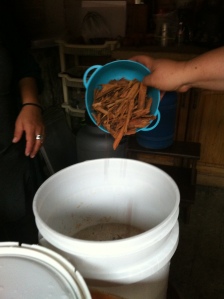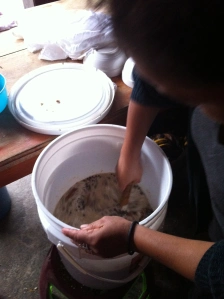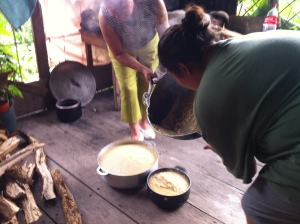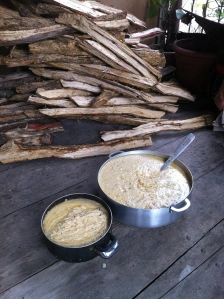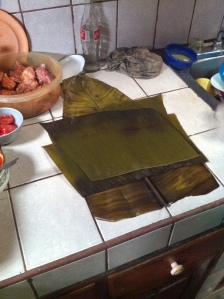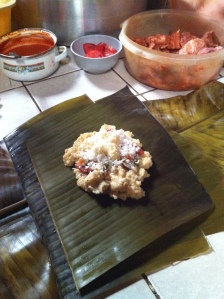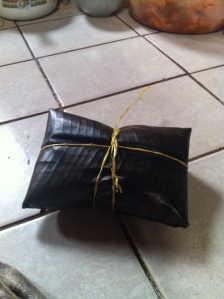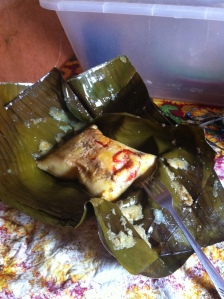In the last few weeks, updating my blog has been at the top of my physical “to do” list, and seemingly one of the easier things to complete on that list. However, it’s gotten pushed repeatedly with all of the duties and activities in this last month of my Peace Corps service. I wanted to share a couple more typical Nicaraguan recipes with you all, and now I’m finally getting to putting them out in cyberspace!
This first recipe is for a drink exclusively from the department of Jinotega, and maybe even unique to the San Rafael del Norte area. Although there are versions of fermented corn drinks that are very common all year round in Nicaragua (generally called chicha), this one is specifically made around Christmas time. If you ask someone from another part of Nicaragua if they know what agualoja is, they will twitch their nose signifying they want you to repeat, or that they didn’t understand. So without further ado, here is the recipe for agualoja, a Jinotegan specialty drink.
Ingredients:
3 lbs. of white corn, well toasted
12 blocks of unrefined whole cane sugar
½ lb. of cinnamon
1 lb. of fresh peeled ginger
1 oz. of cloves
1 oz. of sweet pepper corn
What you’ll need:
A large plastic bucket
Towel
Colander
A hand mill or someone who can mill the corn for you
Toast the corn well and have it milled so that it remains a little chunky. In a very clean (preferably brand new) plastic bucket, add 8 liters of water, 6 oz. of cinnamon, peeled ginger, 2 blocks of cane sugar (cut into smaller pieces), cloves, and the sweet pepper corns.
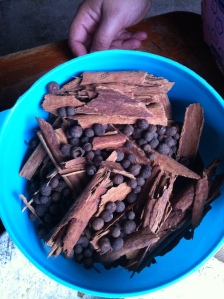
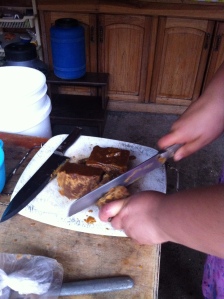
Mix it once and put the lid on the bucket. Tie a cloth or towel to make sure it’s covered well and then leave it sitting undisturbed for 2 days.
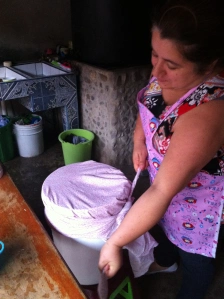
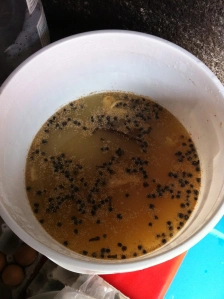
Later, add 2 more cut up blocks of cane sugar per day without mixing it. If the fermentation process is working correctly you should see bubbles rising after a few days.
If, when adding the cane sugar, you notice that it is thickening, boil 3 liters of water and pour it in the bucket without mixing it. This will help it “reset.”
After 7 days you will need to strain the liquid from the solids. You should taste it, and can add water to dilute it, and white or brown sugar to your taste. To make more, you can have the solids re-milled and then add more water to them.
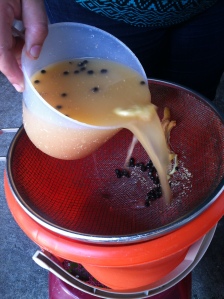
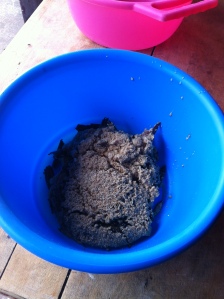
Agualoja usually has a sweet, slightly fermented, spicy flavor. I love it and I’m so glad I had a chance to try making it with my friends!
And now, for one of the major typical Nicaraguan foods: Nacatamales. On a few different occasions, I stopped by a local retired teacher’s home to witness and help a bit with the massive undertaking that is making nacatamales. Nacatamales are a delicious corn based comfort food that is cooked wrapped in a banana leaf. They are only sold Friday-Sunday in most towns in Nicaragua, and are usually eaten around brunch time since they are so heavy.
Ingredients:
Cornmeal
Lard or Margarine
Cooked potatoes, chopped in small pieces
Diced onion
Diced tomato
Diced peppers
Minced garlic
Mint leaves
Sour orange juice (or a mix or orange and lime juice)
Parsley
Rice (soaked overnight)
Pork or chicken
Optional:
Carrot, olives, raisins, peas
What you’ll need:
Blender
Large pot
Banana leaves
String
Lots of time
There are many variations of nacatamales, and every Nicaraguan cook has their secret, but this recipe is using a 1 lb. of corn meal to 1 lb. of potatoes to 1 lb. of lard ratio, which would make a large amount of nacatamales. First prepare the cornmeal according to the directions and mix it with onions, peppers, garlic, mint, and anything else you choose to add. Blend it all together to make the main base of the nacatamal. One of my friends also says that she prepares potatoes as if for mashed potatoes and adds that into the base to make it thicker and more delicious.

Heat the lard in a large pot, and once it’s liquefied add the cornmeal mix. Cook this, stirring constantly, until it starts to bubble at the sides of pot. Once thoroughly heated, pour it into a separate container to cool. It should be thick.
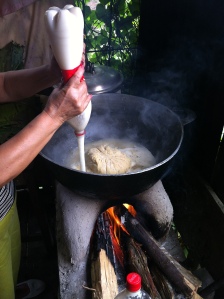
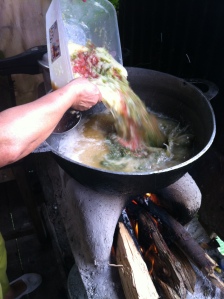
To prepare the nacatamal to boil, lay out 2 or 3 banana leaves flat, and place a blob of the cornmeal mixture in the center. Place a piece of meat and cover it with a tomato. Top that with a handful of rice and a couple of potatoes. Now for the artistry: wrapping it tightly in the banana leaf to cook. First you’ll pull together 2 sides and fold them down together. Fold one end of what’s still open, and then the other, while getting the string tightly wrapped around that little guy like a Christmas present. This is important since you will be immersing them in a pot of water, and if not tied tightly they will leak. You will most likely need someone to help with get this done the first few tries, but practice helps!
Once tied, boil them for 3-4 hours in a large pot and serve hot with a tortilla. Brunch is served! Next up: nap time.
Love from Nicaragua,
M x

